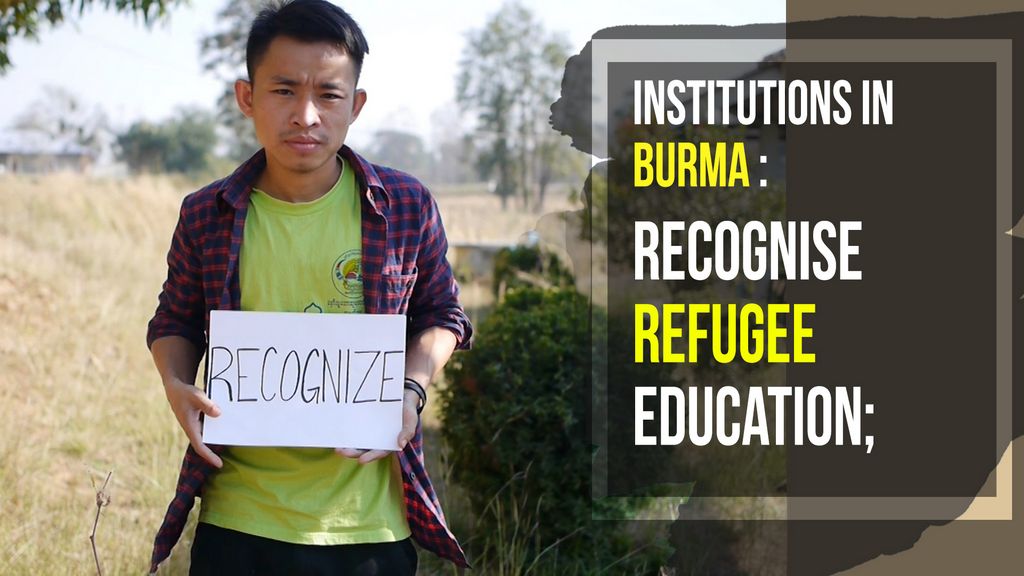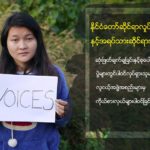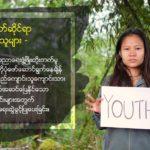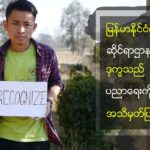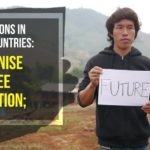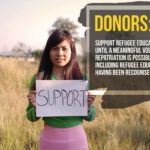Education in Burma
Amidst the conflict in Burma’s rural ethnic areas, villagers have tried hard to continue providing education to the next generation of youth all the while the conflict has raged on and Burma Army strategies have directly targeted civilians. Thousands of villages have been burned to the ground, and health and education systems in ethnic border areas have largely been destroyed. The conflict and abuse has inevitably led to a displacement crisis, and thousands have crossed the Thai border for safety. For many children and youth – often despite direct experiences with the conflict – attaining education was a major reason for undertaking the journey to a refugee camp. Parents have sometimes also sent their children to the refugee camps in Thailand because the school system is better in the camps than in Burma (MacLaren 2010).
Education in Burma is underfinanced and often inaccessible in rural areas. Low salaries for teachers have led to widely used method of paid tuition, whereby students will not be provided enough information during normal class time to pass exams. Teaching is based on rote learning and critical thinking is discouraged. Actors such as the National Network for Educational Reform (NNER) have been campaigning for a reformed free and equal-opportunity national educational policy. The All Burma Federation of Student Unions (ABFSU), umbrella organisation for all the student unions in Burma, has also been an active voice for student rights throughout the country. Challenges remain, however, as seen in 2015 when hundreds of students – including leaders of the ABFSU – were beaten and arrested during a peaceful protest for democratic education.
Education in Burma is also regarded as fuelling long-standing ethnic conflicts. Since the advent of military rule in 1962, the state has pursued a perceived policy of Burmanization. Burmese curriculum has instituted a national identity based on Burman (or Bamar) culture, with Burmese as the dominant language of governance and education (South & Lall, 2016, p. 133). Given the diversity of ethnic nationalities and languages, this has served to marginalise and supress ethnic minority groups (Lall & Win 2013; South & Lall, 2016). Government schools in ethnic states are largely staffed with Burman government teachers and history is taught through a Burman lens, thereby attempting forced assimilation of ethnic minorities. Similarly, nationalistic education denies Burman-majority communities from understanding the realities of the ethnic nationality groups (South & Lall 2016, p. 134). The right to education instruction in mother tongue language has been a key demand of ethnic stakeholders in the armed ethnic conflicts (South & Lall 2016, p. 132).
“The wrong type of education can fuel violent conflict. Education has the potential to act as a force for peace — but too often schools are used to reinforce the social divisions, intolerance and prejudices that lead to war. No country can hope to live in peace and prosperity unless it builds mutual trust between its citizens, starting in the classroom.”
- UNESCO’s Global Monitoring report (2011, p.3)
Education in the Refugee Camps
Karen and other ethnic nationalities traditionally place a very high value on education and many have crossed the border to Thailand in order to go to a camp school. Although the majority of the camp populations have arrived as a family unit (TBC, 2012b), many parents also have sent their children to attend schools in refugee camps across the Thai border (KHRG, 2008).
Education in the camps is provided by CBOs such as the Karen Refugee Committee – Education Entity (KRC-EE) backed up by international NGOs such as World Education, Save the Children, and Right to Play. Educational opportunities vary greatly from one camp to the next. In the more remote camps such as Ban Don Yang in Kanchanaburi Province, education remains largely unattainable, and higher education institutions are far away out of reach. Most educational opportunities are available either in the Tak camps – Mae La, Umpiem Mai and Nu Po – or in the border town of Mae Sot.
Some of the most commendable higher education institutions include the English Immersion Program (EIP) that was founded in Umpiem Mai camp, but moved just across the border to Karen State in 2015; Global Border Studies Program in Nu Po camp; Wide Horizons community development school in Mae Sot; Australian Catholic University (ACU) Liberal Arts Diploma course in Mae Pa; and Minmahaw GED Program in Mae Sot, which provides an equivalent of an American high school diploma. As these opportunities are only available to a handful of students each year, thousands of capable young adults are left with no means to pursue their dream of higher education, raising issues of exclusion and inequality (UNESCO 2009).
Education is highly respected within the refugee community and many refugee youth aspire to become educated citizens who are able to shape their country’s future (Zeus 2010, p. 258). With no place for most to go for further study, they often end up opening a shop or becoming a nurse or a teacher in the camp. Some leave to find factory work in Bangkok or elsewhere in Thailand while many others turn to drugs and alcohol, or even commit suicide, as they see their dreams crushed before them. Neglecting the higher educational needs of refugee youth seriously impairs their opportunities, freedoms and ability to develop to their fullest potential (Zeus 2010).
Tertiary education often suffers a lack of external funding from donor governments and NGOs in part because it is regarded as a luxury, and a preference exists for supporting the provision of primary and secondary education (MacLaren 2010, p.105). This would be understandable if refugee camps were indeed temporary shelters as intended. Refugees in Thailand, however, have lived in the camps for over 30 years. Many youth have been born in the camps and never seen life outside the camp fences.
Recognising and Supporting Refugee Education
For the students who graduate from the higher education institutions along the Thailand-Burma border, the issue is what happens afterwards. Despite the high quality of education that they have successfully completed and rightly feel proud of, their certificates are mostly not recognised inside Burma or abroad.
Recent changes in Burma have led to further decline in donor funding along the border, deeply impacting refugees and other displaced populations. Whilst the changes have also led to refugee repatriation planning, in Burma stagnating reforms, fragile ceasefires, and land riddled with landmines continue to render the definition of a safe and dignified voluntary return of refugees meaningless. Non-recognition of refugee education represents yet another serious impediment to any meaningful definition of a voluntary return.
The quality higher education received by Burma’s refugee youth must be recognised nationally and internationally so that these leaders of tomorrow can pursue their dreams and drive change in their homeland.
In order to achieve durable education solutions for refugee youth, the Burmese Ministry of Education (MoE) must recognise the education undertaken by students in the camps, as pointed out by INGOs such as Save the Children (2015). This is critically important for refugee students’ aspirations for higher education as well as for repatriation and reintegration into communities in Burma (see e.g. Jolliffe, 2016). Refugee-led organisations such as Karen Refugee Committee (2015) have voiced concerns that refugee students repatriating to Burma must pass a test based on a unfamiliar language and curriculum to continue their studies.
The future is uncertain for the tens of thousands of refugee students who have been educated in camps on the Thailand-Burma border using curriculum that is not recognised by their government, leaving them concerned about their potential for further education, employment opportunities and their future (UNHCR, 2016b; Jolliffe, 2016). According to the International Institute for Educational Planning (IIEP 2009) Policy brief, “The long-term, positive impact of education is compromised when student learning is not validated through official recognition.”
Until a meaningful voluntary return of refugees and other displaced populations is possible, and refugee education is recognised by national and international institutions, it is vital that the international community continues to support education in the refugee camps and on the border.
The Inalienable Right to Education
Higher education is a human right enshrined in the Universal Declaration of Human Rights and ‘shall be equally accessible to all on the basis of merit’ (UN 1948: Art.26(1)). This human right is further supported by numerous international frameworks, including the International Covenant on Economic, Social and Cultural Rights (Art. 13c), the Convention on the Rights of the Child (Art. 28c) and the World Declaration on Education for All (Art. 3(4)), which highlights the right to education for refugees and the displaced.
One of the key objectives of UNHCR’s Education Strategy (2012-2016) is to “Improve access to higher education opportunities for refugee young people” by increasing opportunities for refugee youth to benefit from higher education programmes.
Recommendations:
- National actors and civil society: Include representatives from youth organisations as participants in decision-making and stakeholder meetings;
- National actors: Allow for flexible pathways for refugee students when formulating the Higher Education Development Plan;
- Institutions in Burma: Recognise refugee education;
- Institutions in third countries: Recognise refugee education;
- Donors: Support refugee education until a meaningful volunteer repatriation is possible, including refugee education having been recognised.
Read more about refugee camps in Thailand
IIEP (2009). Policy Brief No.1 2009 – Certification counts Recognizing the learning attainments of displaced and refugee students, available at: http://unesdoc.unesco.org/images/0020/002067/206790e.pdf, [accessed 22 January 2017]
Jolliffe, P. (2016). Myanmar’s Political Transition and Educational Aspirations of Refugees in Thailand. NORRAG News, 53, 122-123, available at: www.norrag.org/fileadmin/Full%20Versions/NN53.pdf
Zeus, B. (2010). “Exploring Barriers to Higher Education in Protracted Refugee Situations: The Case of Burmese Refugees in Thailand,” Journal of Refugee Studies, Vol. 24, No. 2,
Lall, M. & Win, H. (2013). “Perceptions of the State and Citizenship in Light of the 2010 Myanmar Elections”, in Myanmar’s transition: openings, obstacles and opportunities, edited by Monique Skidmore and Trevor Wilson (Singapore: ISEAS, 2013).
Martin, R. (2015). The Dilemma of Higher Education in Burma. International Higher Education, (47).
MacLaren, D. (2010). Tertiary education for refugees: A case study from the Thai-Burma border. Refuge, 27(2), 103.
Smith, M. (1999). Burma: insurgency and the Politics of ethnicity. 2nd ed. (London: Zed Books, 1999);
South, A. (2011). Burma’s Longest War: Anatomy of the Karen Conflict. Transnational Institute, Burma Centre Netherlands, Amsterdam, 2011.
South, A., & Lall, M. (2016). Language, education and the peace process in Myanmar. Contemporary Southeast Asia: A Journal of International and Strategic Affairs, 38(1), 128-153.
UNESCO, EFA Global Monitoring report: The Hidden Crisis: Armed Conflict and Education (Paris: UNESCO Publishing, 2011).
UN High Commissioner for Refugees (UNHCR) (2016). Thailand Border Operation: RTG/MOI-UNHCR Verified Refugee Population, 31 October 2016, 31 October 2016, available at: http://www.refworld.org/docid/582b162c4.html [accessed 24 January 2017]
UN High Commissioner for Refugees (UNHCR). (2016b). “No more excuses: Provide education to all forcibly displaced people,” Global education monitoring report: Policy Paper, v. 26, available at http://unesdoc.unesco.org/images/0024/002448/244847E.pdf
